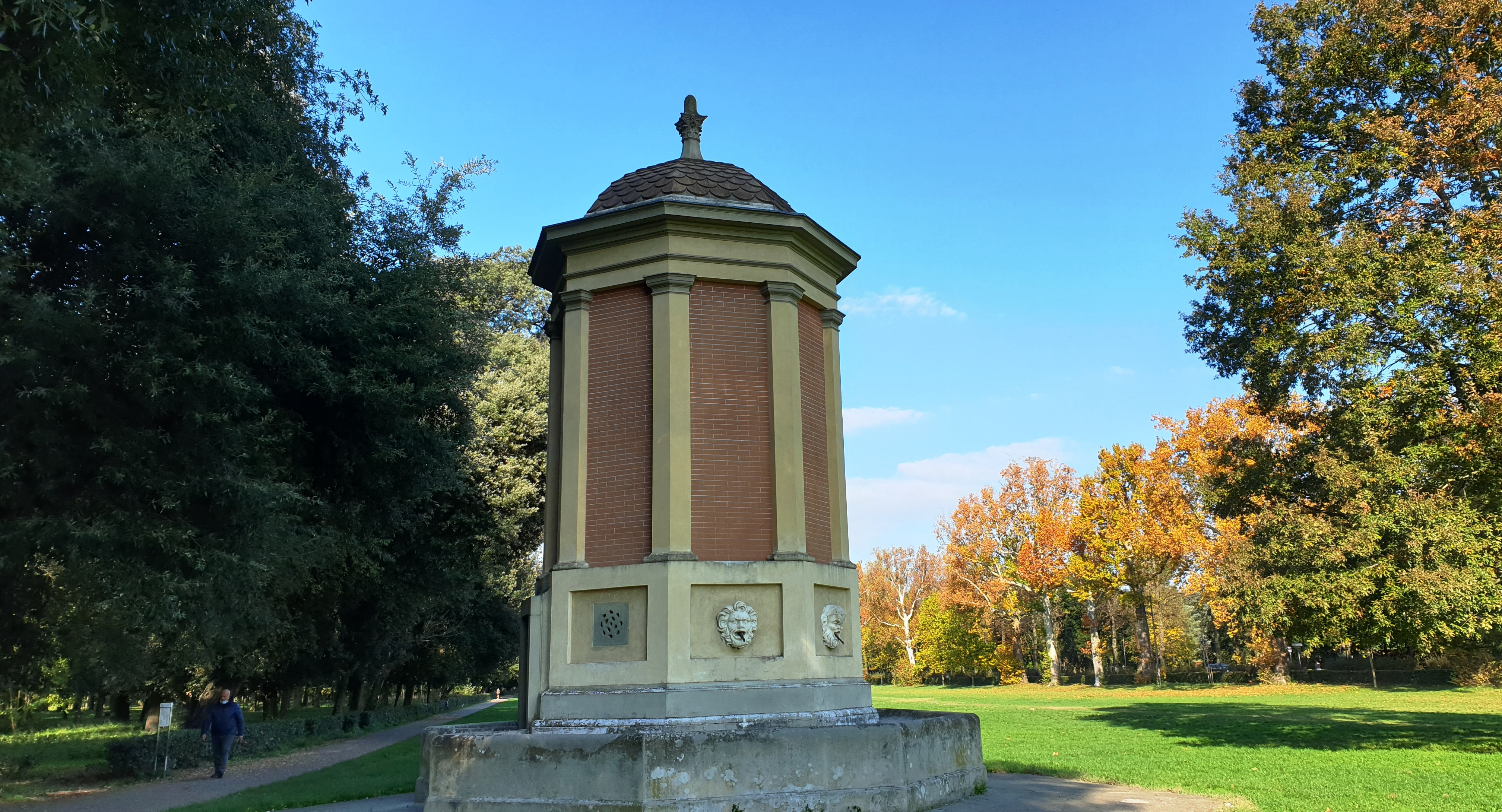
Beyond Renaissance in Florence - La Fontana delle Boccacce
Le Cascine Park, the largest in Florence, was built in 1563 as a
hunting reserve and agricultural farm of the Grand Duke Cosimo I de 'Medici. The name Le Cascine derives from the ancient
Tuscan word "cascio", from cacio, meaning cheese. The cascio was the place where cows were milked and
cheeses were processed. “Cascino” was the beech wood circle used to press the
congealed milk, giving the cheese its round shape. Lastly, Cascinaio was the cheesemaker.
In 1785 the Grand Duke Pietro Leopoldo Habsburg
Lorraine commissioned the architect Giuseppe Manetti (1761 - 1817) to renovate
the park and build some buildings, as the Lorraine family intended to use it to
organize parties, shows and various celebrations. The Fontana delle Boccacce, so called for the masks from which the water
came out, was built in the Prato del Quercione (the oak, "quercia", which gave
the meadow its name, is no longer there, it has dried up). The fountain has the
shape of a classical temple, with an octagonal base and bricks and masonry
pilasters, a small dome top covered in scaled tiles ending in a short column
with a Corinthian capital. These classic little temples of romantic
inspiration, became fashionable. They were used as fountains, wells or gazebos,
and populated the gardens of the Florentine aristocracy throughout the 1800s.
At the time the fountain was built, cows were
still grazing freely in the meadow and thus found themselves using the most
elegant drinking trough a cow could ever see. In fact, its original name was Abbeveratoio del Quercione (big oak drinking trough).
In 1809 Elisa Baciocchi, Napoleon Bonaparte's
sister, who became Grand Duchess of Tuscany for a few years, opened the park to
the public and the cows were evicted along with the cheesemakers. The whole
area, which was finally bought by the Municipality of Florence in 1917, became
a place for walks, picnics and sport and the Fontana delle Boccacce, a reference point for romantic dates. It brings
a smile now to imagine the place surrounded by thirsty cows, happily
mooing.
Fun fact: For those interested in literature, we
would like to point out that the last exciting scene of one of the most famous
and beautiful Italian novels of post-World War II, takes place around this
fountain and in the surrounding lawn: Le ragazze di San Frediano (The girls of San Frediano), by Vasco
Pratolini, Editrice Vallecchi 1952. It's worth reading.



